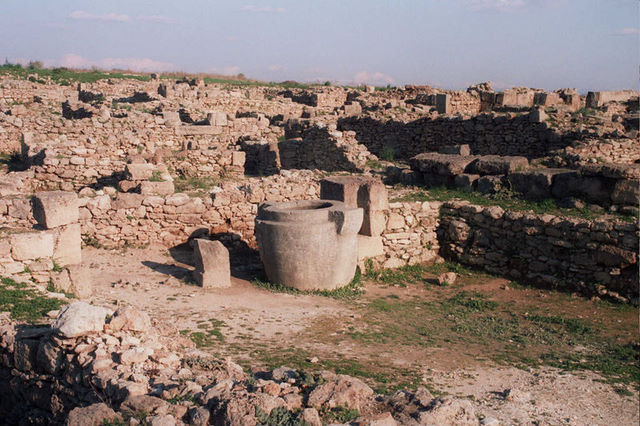Ugarit, 6000-1200 BCE
On the north coast of Syria exactly opposite the east tip of Cyprus lies Minet El-Beida, the “White Haven.” The Mediterranean waves break here on dazzling snow white limestone rocks in a wonderful display of colour, changing from light green to deep violet. Inland, great banks of clouds surrounded the lonely mountain top of “Jebel Aqra.” The natives say that long ago it was the dwelling-place of the gods of their ancestors.
Near the sea in 1928 a peasant who was ploughing discovered a long underground passage. Initial investigation showed that it led to a tomb. It was a sepulchral vault in the style of Mycenae.
When the discovery was announced France, which as mandatory power was in control of Syria, reacted with its customary alacrity. M. Dussaud, curator of oriental antiquities in the Louvre, despatched Professor Claude F. A. Schaeffer with some other experts to the “White Haven.” Exciting discoveries awaited them.
Half a mile from the shore and the old Mycenae grave rose an artificial hill. Round its base flowed a pleasant rippling brook. It had always been called by the natives Ras es Shamra, “Head of Fennel.” Fennel was actually growing on the old heap of ruins which concealed the remains of the Phoenician royal city of Ugarit. More than 3,000 years ago it had been wiped out for good by the onslaught of the Sea Peoples.
Schaeffer had incredible luck with his excavations on the “Head of Fennel.” For here at last the long-sought information about the religions of Canaan came to light. Between two temples, one of them dedicated to the god Baal and the other to the god Dagon, he found among the houses of rich merchants the house of the High Priest of Ugarit, who owned a handsome library, as is clear from the large number of inscribed tablets which were found there. Schaeffer’s trained eye recognised at once that the writer must have been using a hitherto unknown Phoenician alphabet. It was surprisingly quickly deciphered in 1930 by three scholars — Professor H. Bauer, of the University of Halle, Germany, and C. Virolleaud and E. Dhorme of France. The bilingual documents — one of the languages is an ancient Canaanite dialect, which is something like pre-Mosaic Hebrew — are exclusively concerned with the gods and religions of old Canaan, with which Israel on entering the Promised Land had its first fateful encounter.
Werner Keller. The Bible as History. Bantam Books. New York. 1982. p.286-287.




